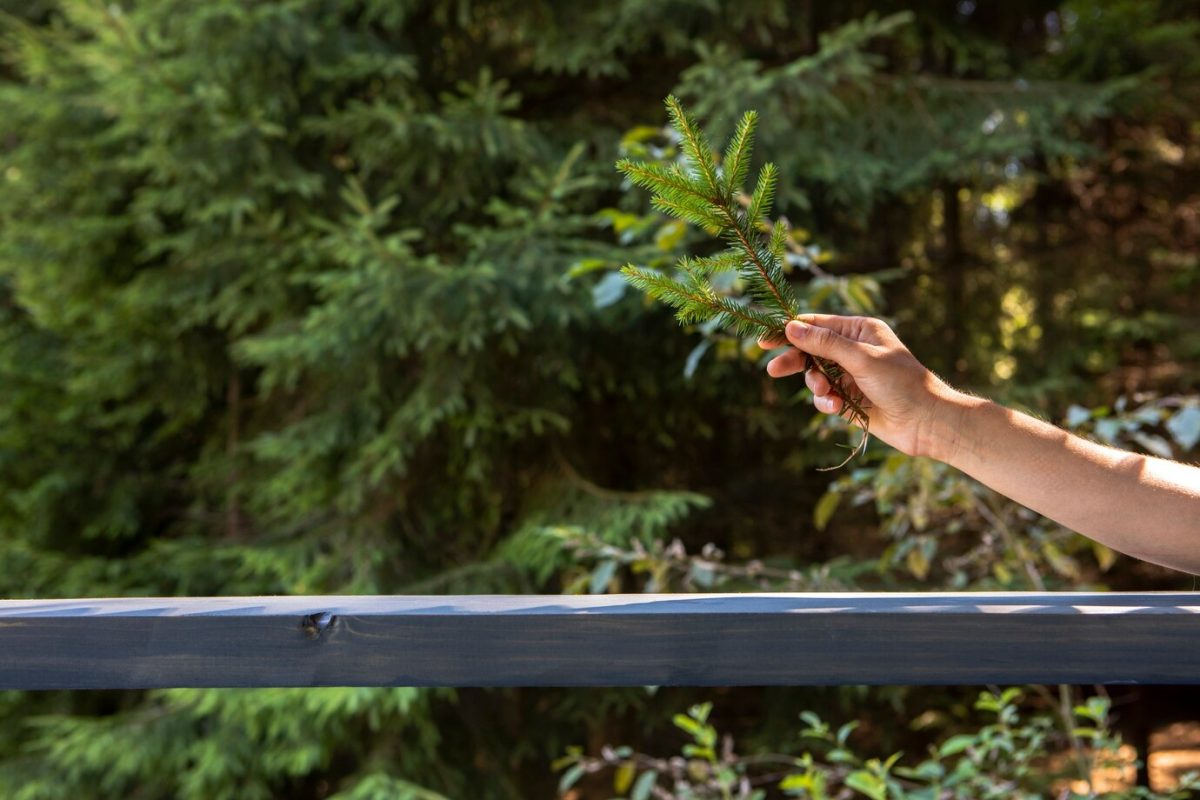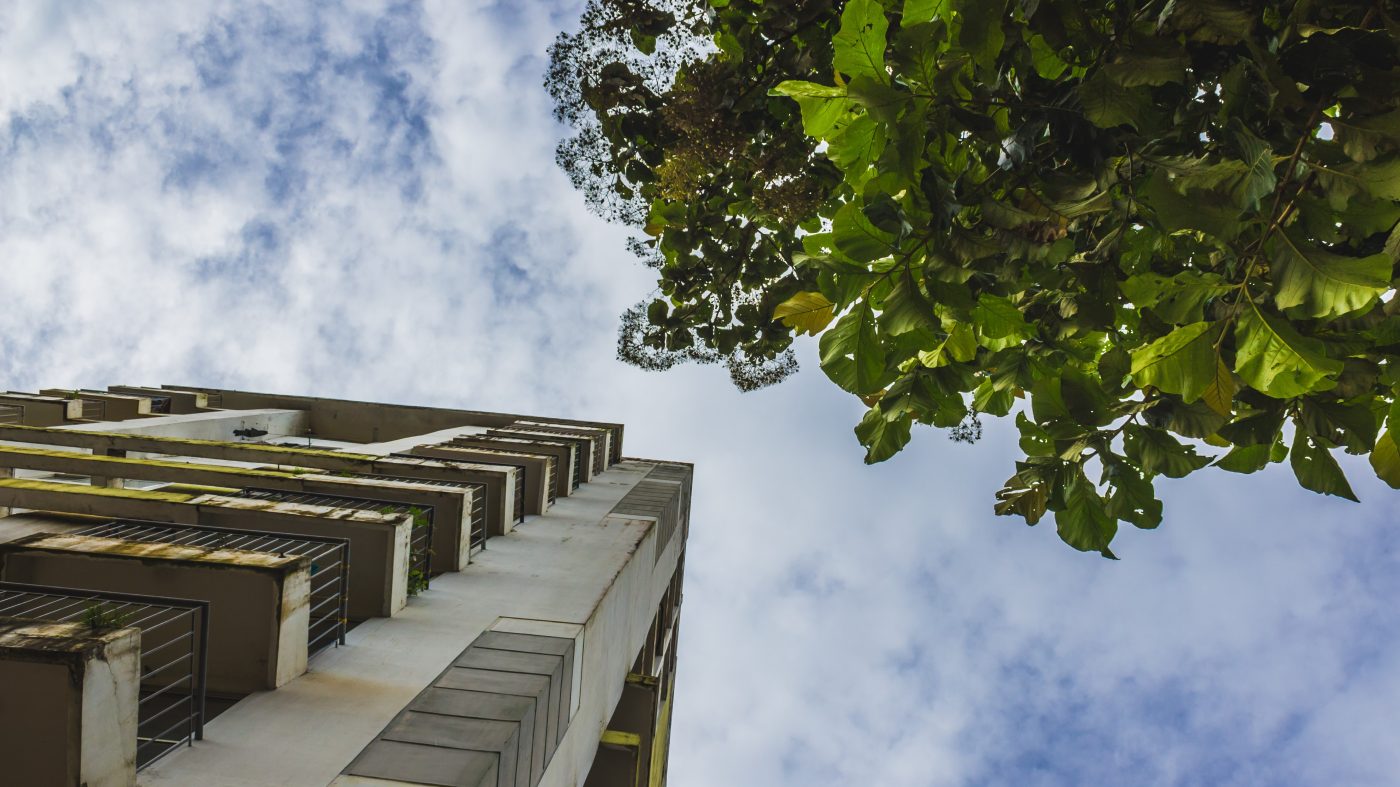Imagine if your garden could fight pollution silently. Does your outdoor space have more power than you think? Landscaping isn’t just about pretty plants; it’s a way to breathe easier in Singapore’s busy cities. In fact, landscaping can improve air quality significantly.
Skyscrapers and traffic fill the skyline, but green spaces are key in keeping air clean. Every tree and shrub in your garden helps trap dust and absorbs carbon dioxide. This turns pollutants into cleaner air for you and your family.
As Singapore grows, finding a balance between urban life and nature is crucial. Even small choices in professional landscaping, like picking the right plants or designing smart outdoor spaces, can improve air quality. Your garden’s design might just lead to clearer skies and healthier living.
The Connection Between Green Spaces and Cleaner Air
Green spaces are more than just pretty views. They’re active systems that improve the air around us. Plants clean the air by taking in pollutants and releasing oxygen. This makes the air fresher, creating healthier spaces to breathe.
How Plants Act as Natural Air Purifiers
Leaves and roots work together to filter out toxins. Plants trap particles like pollen and pollutants through tiny pores. Both indoor and outdoor plants help clean the air, making our environment healthier.
The Science of Photosynthesis and Air Quality
Photosynthesis does more than just help plants grow. It turns carbon dioxide into oxygen, improving air quality. As plants absorb CO2, they release oxygen, cutting down greenhouse gases. This helps fight pollution, making outdoor spaces safer to breathe.
Urban Heat Island Effect and How Landscaping Counters It
In Singapore’s warm weather, concrete and asphalt trap heat, causing the urban heat island effect. Landscaping helps by shading surfaces and releasing moisture. Trees and green roofs can cool areas by several degrees, cutting down on cooling energy use and smog.
Landscaping Improve Air Quality: The Scientific Evidence

Studies show green spaces have a big impact. They prove that good professional landscaping can cut pollution. Trees and shrubs help by trapping dust and absorbing harmful gases.
A 2022 study in places like Singapore found something interesting. Areas with lots of greenery had 22% less PM2.5 than paved areas.
Local research shows real results. Plant canopies can catch 30% of tiny pollutants. This includes ozone and nitrogen dioxide. Also, dense foliage near roads can cut traffic emissions by up to 18%. Global studies back this up. The Clean Air Initiative found air quality improves in greened urban areas.
Numbers tell the story. Ten trees per 100 square metres can lower VOCs by 15%. This shows how landscaping choices can change your environment. Green spaces also lower carbon monoxide by 8-12% in homes. This data helps you plan better. You can design layouts that bring more benefits.
Best Plants for Air Purification in Singapore’s Climate
Improving air quality in Singapore begins with the right Singapore air purifying plants. This guide helps you pick the best plants for the tropical climate. You’ll find native species, easy-to-care-for plants, and vertical gardens to enhance your home’s air.
Native Singapore Species That Excel at Air Filtration
Choose native plants Singapore like Spider Plants and Areca Palms. They love the local weather and clean the air. The Peace Lily, for instance, fights off ammonia and trichloroethylene while looking beautiful. These plants are tough and perfect for Singapore’s weather.
Low-Maintenance Options for Busy Homeowners
If you’re always on the go, low maintenance air purifying plants are for you. ZZ Plants and Snake Plants need little water and light but clean the air well. A bit of misting now and then keeps them happy without needing constant care.
Vertical Gardens: Maximising Air Quality in Limited Spaces
City folks can improve air quality with vertical gardens air quality setups. These systems let you grow plants like Pothos or Dracaena up, saving space. Make sure they get enough light and water to work well, even in small places.
Strategic Landscaping Techniques for Maximum Air Quality Benefits
Choosing the right plants is just the start. To get the most out of them, use landscaping techniques air quality that boost their effect. By placing plants wisely, you can catch pollutants before they reach your home.
Think about how air moves when placing plants near windows or vents. This traps dust and fumes. Plants near roads or busy areas can block harmful emissions. Clusters of plants near AC units cool and purify the air better.
Placement Considerations for Optimal Air Filtration
Spacing and density are key. Too many plants can block airflow, so keep some space. In small areas, use tiered arrangements or raised beds to layer plants. This helps absorb pollutants more effectively. Aligning plants with pollution sources creates a barrier. This boosts purification without losing beauty.
Combining Different Plant Types for Comprehensive Air Cleaning
Using different plants makes a comprehensive air purification system. Mix leafy shrubs with trailing plants to catch more pollutants. Plant combinations that include various types remove toxins like formaldehyde and benzene.
In Singapore’s humid climate, use plants that love moisture at ground level. Place drought-resistant plants above for better air quality and less upkeep. This makes your garden a custom solution for cleaner air.
Addressing Singapore’s Unique Air Quality Challenges Through Landscaping

Singapore’s warm weather and crowded cities make air quality tough. Haze and car emissions are big problems. Singapore haze solutions are needed. Landscaping can help by catching dust and improving tropical air quality.
Plants like Ficus and Areca palms do well here. They’re great for making green walls around homes. Near roads, thick shrubs and hedges help by catching pollutants. Vertical gardens on buildings clean the air, which is key in crowded places. Near construction, groundcover plants keep soil in place, reducing dust and helping with landscaping pollution control.
Using these methods helps Singapore become a “City in a Garden”. Native plants need less water and handle humidity well. This makes them effective for a long time without needing a lot of care.
Landscaping can tackle haze, car fumes, and dust from building sites. Even small changes in your garden or balcony can help. This supports the country’s goal of balancing growth and nature.
Conclusion
Every choice in professional landscaping can make the air cleaner and homes healthier. Plants absorb pollutants and release oxygen, improving air quality. Sustainable landscaping also helps cool cities in Singapore’s hot climate.
Choosing native plants or easy-to-care-for ones like Areca palms or spider plants is smart. They purify the air well. These actions make your garden look good and improve your home’s health.
Start with a few indoor plants or a vertical garden on your balcony. These steps follow Singapore’s green living goals. They lay the groundwork for bigger projects later.
Expanding to more plants or shaded paths can boost air quality. You don’t need to do it all at once. It’s about making progress without feeling overwhelmed.
Your part in sustainable landscaping is important. Each plant you add helps clean the air and cool your area. It also supports community efforts to meet environmental goals.
By focusing on air quality, you make your outdoor space beneficial for everyone. Your choices contribute to a greener, cleaner future. This future is built on beauty and science.

